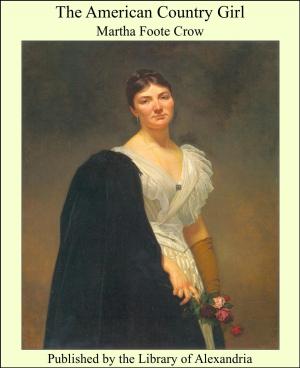Lives of Illustrious Shoemakers
Nonfiction, Religion & Spirituality, New Age, History, Fiction & Literature| Author: | William Edward Winks | ISBN: | 9781465547835 |
| Publisher: | Library of Alexandria | Publication: | March 8, 2015 |
| Imprint: | Language: | English |
| Author: | William Edward Winks |
| ISBN: | 9781465547835 |
| Publisher: | Library of Alexandria |
| Publication: | March 8, 2015 |
| Imprint: | |
| Language: | English |
Time out of mind The Gentle Craft has been invested with an air of romance. This honorable title, given to no other occupation but that of shoemakers, is an indication of the high esteem in which the Craft is held. It is by no means an easy thing to account for a sentiment of this kind, or to trace such a title to its original source. Whether the traditionary stories which have clustered round the lives of Saints Anianus, Crispin and Crispianus, or Hugh and Winifred, gave rise to the sentiment, or the sentiment itself is to be regarded as accounting for the traditions, one cannot tell. Probably there is some truth in both theories, for sentiment and tradition act and react on each other. Certain it is, that among all our craftsmen none appear to enjoy a popularity comparable with that of “the old Cobbler” or “Shoemaker.” Most men have a good word to say for him, a joke to crack about him, or a story to tell of his ability and “learning,” his skill in argument, or his prominence and influence in political or religious affairs. Both in ancient times and in modern, in the Old World and in the New, a rare interest has been felt in Shoemakers, as a class, on account of their remarkable intelligence and the large number of eminent men who have risen from their ranks. These facts, and especially the last—which has been the subject of frequent remark—may be deemed sufficient justification for the existence of such a work as this. another reason might be given for the issue of such a book as this just now. A change has come over the craft of boot and shoe making. The use of machinery has effected nothing short of a revolution in the trade. The old-fashioned Shoemaker, with his leathern apron and hands redolent of wax, has almost disappeared from the workrooms and streets of such towns as Northampton and Stafford in Old England, or Lynn in New England. His place and function are now, for the most part, occupied by the “cutter” and the “clicker,” the “riveter” and the “machine-girl.” The old Cobbler, like the ancient spinster and handloom weaver, is retiring into the shade of the boot and shoe factory. Whether or no he will disappear entirely may be questionable; but there can be no doubt that the Cobbler, sitting at his stall and working with awl and hammer and last, will never again be the conspicuous figure in social life that he was wont to be in times gone by. Before we bid him a final farewell, and forget the traditions of his humble yet honorable craft, it may be of some service to bring under one review the names and histories of some of the more illustrious members of his order
Time out of mind The Gentle Craft has been invested with an air of romance. This honorable title, given to no other occupation but that of shoemakers, is an indication of the high esteem in which the Craft is held. It is by no means an easy thing to account for a sentiment of this kind, or to trace such a title to its original source. Whether the traditionary stories which have clustered round the lives of Saints Anianus, Crispin and Crispianus, or Hugh and Winifred, gave rise to the sentiment, or the sentiment itself is to be regarded as accounting for the traditions, one cannot tell. Probably there is some truth in both theories, for sentiment and tradition act and react on each other. Certain it is, that among all our craftsmen none appear to enjoy a popularity comparable with that of “the old Cobbler” or “Shoemaker.” Most men have a good word to say for him, a joke to crack about him, or a story to tell of his ability and “learning,” his skill in argument, or his prominence and influence in political or religious affairs. Both in ancient times and in modern, in the Old World and in the New, a rare interest has been felt in Shoemakers, as a class, on account of their remarkable intelligence and the large number of eminent men who have risen from their ranks. These facts, and especially the last—which has been the subject of frequent remark—may be deemed sufficient justification for the existence of such a work as this. another reason might be given for the issue of such a book as this just now. A change has come over the craft of boot and shoe making. The use of machinery has effected nothing short of a revolution in the trade. The old-fashioned Shoemaker, with his leathern apron and hands redolent of wax, has almost disappeared from the workrooms and streets of such towns as Northampton and Stafford in Old England, or Lynn in New England. His place and function are now, for the most part, occupied by the “cutter” and the “clicker,” the “riveter” and the “machine-girl.” The old Cobbler, like the ancient spinster and handloom weaver, is retiring into the shade of the boot and shoe factory. Whether or no he will disappear entirely may be questionable; but there can be no doubt that the Cobbler, sitting at his stall and working with awl and hammer and last, will never again be the conspicuous figure in social life that he was wont to be in times gone by. Before we bid him a final farewell, and forget the traditions of his humble yet honorable craft, it may be of some service to bring under one review the names and histories of some of the more illustrious members of his order















